#Epaulette Mountain
Explore tagged Tumblr posts
Video
Mountains as a Backdrop for Waterfowl Lakes (Banff National Park) by Mark Stevens Via Flickr: While at the Waterfowl Lakes Viewpoint along the Icefields Parkway with a view looking to the west-southeast to ridges and peaks around the North Waputik Mountains with Mount Chephren, Kaufmann Peaks, Epaulette Mountain, and Mount Sarbach. This is in Banff National Park.
#Alberta Highway 93#Alberta Provincial Highway No. 1A#Alberta and Glacier National Park#Azimuth 257#Banff National Park#Canadian Rockies#Central Main Ranges#Day 5#DxO PhotoLab 6 Edited#Epaulette Mountain#Evergreen Trees#Evergreens#Forest#Forest Landscape#Highway 93#Hillside of Trees#Icefields Parkway#Kaufmann Peaks#Lake#Landscape#Landscape - Scenery#Looking WSW#Mostly Cloudy#Mount Chephren#Mount Sarbach#Mountain Peak#Mountains#Mountains in Distance#Mountains off in Distance#Mountainside
2 notes
·
View notes
Text

Portrait of Wilhelmine Countess of Munster
Artist: Edward Peter Strawley (German, 1768 – c. 1826)
Date: 1822
Medium: Oil on canvas
Location: Derneburg Castle, Hildesheim district, Germany
Wilhelmine Countess of Munster
Lady Augusta Gordon (née FitzClarence; 17 November 1803 – 8 December 1865) was a British noblewoman. Born the fourth illegitimate daughter of William IV of the United Kingdom (then Duke of Clarence and St Andrews) and Dorothea Jordan, she grew up at their Bushy House residence in Teddington. Augusta had four sisters and five brothers all surnamed FitzClarence. Soon after their father became monarch, the FitzClarence children were raised to the ranks of younger children of a marquess.
#portrait#lady augusta gordon#artwork#countess wilhelmine#countess#curly coiffure#floral headress#bateau neckline#epaulettes#three quarter length#puffed sleeves#belt#jeweled buckle#empire waistline#necklace#bracelets#wrap#fur#upholstered chair#german culture#german art#urn#mountains#peter edward strawley#german painter#oil on canvas#fine art#oil painting#european art#19th century painting
12 notes
·
View notes
Text
Wesa Ready to Do Our-san Part
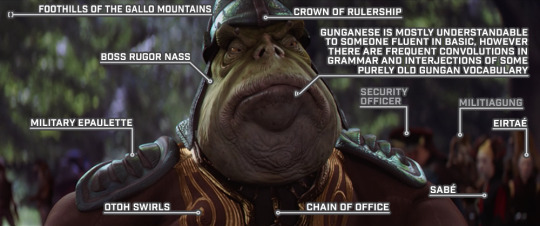
STAR WARS EPISODE I: The Phantom Menace 01:44:08
#Star Wars#Episode I#The Phantom Menace#Naboo#Gallo Mountains#Boss Rugor Nass#military epaulette#Otoh swirls#chain of office#crown of rulership#Gunganese#Galactic Basic#Old Gungan#unidentified Security Officer#unidentified militagung#unidentified Gungan#Eirtaé#Sabé
1 note
·
View note
Text
"Fairy tales" || choi san || one-shot? mini-series?



| genre: prince! san. fluff. angst. adventure | mentions: none so far

You pick up a book “Dragon Mountain? San look at this book! … ‘Once upon a time, a king built his own empire with the help of dragons as’ … oh my gosh San, it looks like you!” When you turn around to show him the image of the said prince of the story, you burst out laughing as you see him clad in what seems to be a noble attire. Similar to the one in the book.
“What the hell are you wearing? And …” You look around the library, a witty smile still on your lips as you glance around to look for your other friends before returning back to him, “When did you even have the time to change? We just got here in the library 30 minutes ago.”
A frown on his gentle face. His two eyebrows meet in the middle as his lips are straight: not an ounce of delight evident. “Who are you?”
You stared at him, the chemistry flow of your brain cells changing as your entire sentiment inside had crumbled to a crucial home-sick pain, you look around once again as the place didn’t even change a bit yet your friend in front of you, did.
“What is wrong with you? Stop playing games right now, San—”
“You address me from my title, you are not far from a commoner to call me informally.” You were taken back with his words. Your eyes wandered once again, settling on the quiet, comforting sound of the ceiling fan of the library, to the attempted whispers of the customers as they gossip on the new novel they found until your eyes landed on his outfit, a splendid coat of the finest black velvet, adorned with intricate golden braiding that winds its way across the chest like the threads of destiny itself. The epaulettes, grand and regal, cascade with delicate fringe, signifying his esteemed rank. Draped over his shoulder is a rich scarlet sash, embellished with ornate gold embroidery—a mark of valor and authority. The uniform speaks of a man who carries the weight of his lineage with pride, every detail a testament to the grandeur and honor bestowed upon him by his forebears.
Your eyebrows met in the middle, out of curiosity and confusion, everything from the book or the image of the prince inside the book seem to describe San so well. And it was scaring you. “Stop playing games.”
San took a step forward, making you back away as your heart was beating out of fear, “It’s you should stop playing this game. Just who on earth are you?”
It took a couple more steps before you hit the shelf and he had his hands on each side of your head, trapping you. Your breath hitch as his face inches closer to yours. Your eyes shut and lips curled inside as you look sideways— your throat squealing from the closeness.
“Are you perhaps … a spy?”
TO BE CONTINUE…

#ateez#ateez imagines#ateez x reader#ateez fanfic#ateez scenarios#ateez choi san#san ateez#ateez san#choi san#ateez san fluff#ateez san x reader
100 notes
·
View notes
Text

Epaulette Mountain and the Mistaya River, Banff National Park, Alberta, Canada
101 notes
·
View notes
Text
napoleon's role in haiti and his reinstitution of slavery in the carribean is so often elided over. 22000 of his 35000 strong force was lost. his general charles leclerc (also his brother in law) advocated for mass genocide as they retreated. leclerc dies of yellow fever eventually.
We must destroy all the blacks of the mountains – men and women – and spare only children under 12 years of age. We must destroy half of those in the plains and must not leave a single colored person in the colony who has worn an epaulette.
101 notes
·
View notes
Text
The Post-Ritual Ritual
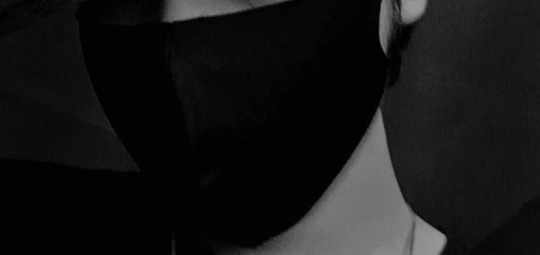
Word count: 1,275
Rating: Teen & Up
Summary: After a ritual ends, Dew is left alone while all the other ghouls pair off. Papa keeps him company.
Key features: Muzzled Dew, submissive Dew, lots of fluff and no smut, caring Copia
The end of the show was always filled with high energy, wanting to give the city a lasting impression. Aether jumped around, Swiss slid on his knees, Sunshine would dance and jump around the stage, Cirrus and Cumulus would cuddle and spin, Mountain would do a five minute solo, Dew and Rain… Were Dew and Rain.
Normally, once the show had ended, the ghouls would all pair off and head back to the green rooms, dressing rooms, toilets, or just the alleyway for some fun before clambering back onto the tour bus.
Copia tended to stay out of it, for the most part. High energy ghouls were dangerous. Lots of fangs and teeth and claws and hissing and growling. And frankly Bad Dragon sized appendages. For his health, he let the band work it out amongst themselves.
However, after finishing their show in Adelaide, Copia noticed that one ghoul had been left out.
Aether and Swiss had quickly ducked off the stage with excitable grumbles, Rain had been grabbed by the claws of Cirrus and Cumulus and dragged to a nearby dressing room, Sunny had held Mountain's hand and lead him to a green room with happy chirrups and chitters.
But that left Dew.
And he looked pretty lost.
He was quiet, shuffling around backstage as he packed away his guitar instead of letting a tech do it.
Copia, who had been standing at the stageside dressing mirror as he removed his makeup, noticed.
"Little ghoul." He said, leaving just the black around his eyes as he stood to full height. "Is everything alright?"
Dew looked up at him like a deer caught in headlights. He blinked, then slowly closed the guitar case and locked it.
"Ghoul?" Copia repeated. "Answer me. Although I am Papa, I cannot read minds, you know?"
Dew blinked again. Then, he raised his eyebrow behind the goggles of the helmet and pointed to the mouthpiece. He tipped his head to the side.
Ah.
The muzzle.
A flat piece of fabric that laid over his mouth and nose and buckled in the back. They had started muzzling him during rituals as Dew had a habit of biting people when his excitement got too much. Inside the muzzle was a rubber bit, that could be swapped out for various sizes and chew strengths, depending on what he needed that night.
"My apologies, ghoul. I had forgotten about that." Copia chuckled. Dew just went back to wrapping up cables. "Where is your pack?"
Dew shrugged.
"Do you not wish to go off with them, huh? The ghoulettes seemed to be having fun with your little friend."
Another shrug.
Copia could see Dew's jaw working behind the balaclava, playing with the thin rubber bit in his mouth.
"Well…" Copia sighed, leaning back against the vanity as he took out his earpiece and placed it down for some tech to find. "I was planning on going back to the bus and filling out my crosswords. I think your pack will be a while yet. Would you like that?"
Dew nodded quickly, his helmet wobbling. He finally took it off and placed it to the side, but kept his balaclava up. The stagehands didn't need to know about the muzzle.
"Come, come." Copia wrapped his arm around Dew's shoulders and led him through the long corridors to the back of the venue, his hand gently rubbing under the epaulette at the top of Dew's uniform.
As they passed some of the rooms on the way, they heard hisses and growls and mewls and slams. Copia tried to ignore it, but he would be checking in with the ghouls later, because that slam sounded rough.
Copia nodded to the security outside the venue as they walked out into the night. Down the alley, he vaguely spotted Mountain being pressed against a wall, his legs around Sunny's waist, the smaller ghoulette somehow holding the taller ghoul upright effortlessly. He huffed fondly, then guided Dew in front of him, making him board the bus first.
Thankfully, the cleaners had been in during the concert. The ghouls had a horrible habit of making the bus look like a bombsite.
"Go and get changed." Copia instructed. He could smell the sweat coming off both the ghoul and himself, and his trousers were far too tight to lounge in. "We'll meet at the sofas upstairs."
Five minutes later, the pair reunited. Copia was wearing a black tracksuit, the jacket unzipped, a plain tee underneath it. Dew was in a band shirt, far too big to be his own, and he was wearing it like a nightie. He also still had his muzzle on, though this was probably because Sister had enchanted it so he physically couldn't take it off by himself.
Dew stood awkwardly in front of Copia, who was lounging with his puzzle book in one hand and a pencil in the other. His reading glasses were perched on the top of his head.
"Well?" Copia asked, eventually looking up from '(6) Ghastly'. He raised an eyebrow at Dew. "Are you going to sit? Or would you prefer to kneel?"
Instantly, Dew dropped to his knees. He crawled, on his hands and knees, to Copia, then pressed his forehead against the side of his knees.
"Ah… Well…" Copia chuckled awkwardly. He passed his pencil into his other hand and reached down, placing his hand on top of Dew's head. Dew let out a soft 'mrrp' and pressed his head up into Copia's hand in response.
"You like that, huh?" He asked. He felt Dew nod against his hand. "You know, I can take off the muzzle for you, if you would like to spe-" Dew shook his head violently. "Alrighty then. We will keep it on."
Copia returned to his crossword, and the bus lapsed into silence.
For Dew, the minutes seemed to stretch into hours. He quietly played with the bit in his mouth, running his tongue over it, gnawing with both his back teeth and his front teeth, while staring at nothing in particular down the long hallway of the bus.
After what seemed like ages of zoning out, the fuzzy feeling hit him in one big rush. Dew exhaled slowly, feeling his shoulders slump as the subspace slowly crawled up his neck and into his brain. Copia hadn't even done anything, and he was already dropping.
Copia noticed. He saw how Dew's shoulders slumped. Felt how he leaned just a little harder against his side. He could also feel Dew absentmindedly playing with his shoelaces.
"Everything alright, little ghoul?" He checked in. Dew gave a small nod against his knee. "Can I make this better for you?"
Dew paused for a long moment. His brain was like molasses, and he needed a moment to process what Copia said. Eventually, his hands moved, signing what he wanted. 'L-A-P'.
Copia had to then go through his internal sign language dictionary. The ghouls were all fluent in it, what with Dew and Rain sometimes going nonverbal, but Copia was still learning.
"Oh, you want… You wish to sit… In my lap?" Copia asked, wanting to make sure they were on the same page. Dew nodded, then before Copia could move, he'd already scrambled up into his lap. "Oh… Dewdrop…"
Dew let out a soft trill, curling up tight in Copia's arms. He rested his head on his shoulder, his arms linked loosely around his neck. He shifted around a few times, getting comfortable, then started purring softly. Copia smiled warmly, then rested his head on Dew's, letting out a contented sigh.
"There we are, my droplet. You're a good boy, really."
#ghost#ghost band#ghost bc#papa emeritus#headcanons#my works#headcanon#dew#dewdrop#cirrus#My fics#Cumulus#Swiss#Muzzled dew#Copia#Cardinal copia#Bun writes fics
89 notes
·
View notes
Text

Nations & Their Cities (3)
Manj Figi - west of askarra, south of myrrdin, east of nuradan, north of the tenibressa
Capital: Sunja
Cities: Apenina, Triste, Neppali, Verona, Venita, Levin, Epaulette, Deville, Orlea, Élisabette, Empuso, Merveilleux, L'hsare
Sights: Villa Pterydon (folk hero's historic home), Pommelette (tavern), Garden of Eyes, Terrasse du Destin (terraces around Sunja), Chateau Cielle (quarters for royal guests), the Summer Palace (twin to Miraglas' Winter Palace), the Aurélie (bordel), Nuit Sacrée (Sanguinarian church), the Novella (library & publishing house), Emírí Sal Dans (dance theater), Kay Lou (packhouse), Oseyan Pointe (lighthouse), Bête Silva (beast's forest), Rovinare Fosse (where they threw plague-ridden bodies), Mandira Mangeur (face-eater temple)
Kavasta - directly north of myrrdin, chimeria to the east, strigane southwest, viostra northwest, with miraglas to the north)
Capital: Kavastok
Cities: Nishka, Sacha, Vigga, Bushka, Karstag, Savarog, Tosk, Novgorod, Derben, Norlisk, Ivana, Penstka, Sever, Kisarov, Korda
Sights: Dragon's Spine Mountains (runs the length of Kavasta), Hinge of the Dragon's Maw (part of the dragon's spine cutting through Viostra into Miraglas), Daggerwoods (pine forest), Tsatsi Pass (a series of narrow mountain passages), Bushki's Grave (folk hero's tomb ( and his lixni)), Fishmonger's Port (big big fishing town attached to Kavastok), Hargraven's Hunt (sanctified hunting grounds in Nishka Valley), Drakgora Highway (connects Kavastok with Nishka), Drakgoran Aqueducts (cut through the mountains near Kavastok), Tsaristasia (tomb for all their royalty), Zelen Dom (healing house), Dolina Palace (royal palace hidden in the mountains near Kavastok)
Kírât - hidden oasis in the dustveil, north of the diremark, northeast of vago & chimeria, south of the dife frèt
Districts: Vapari (mercantile), Kisana (field & farm), Basahi (royal), Sarya (tavern & inn), Yodai (guard/soldier), Nirmani (industry), Kali (arts & theater), Lapriya (arbory & temple)
Walls: Oasi Gate (outermost wall, around Kisana), Ganizon Gate (second & third walls between Yodai & Kisana, garrison), The Funnelweb (spiraling half-walls between Nirmani & Vapari), Lespri Gate (sixth wall & seventh walls, between Sarya & Kali), Dènye (eigth & ninth final walls sequestering & cutting between Basahi & Lapriya)
Sights: Dragon's Breath Fields, Reformation of Goldleaf & Petta (temple to ancient Sunjatti lovers, followers of the Sightless Eye), Khuthd's Rest (tavern named for the dragon, run by Fuad), Dynna's Bakery, Dhulo Parda Kavo (catacombs beneath the citadel), Pujari Roz (temple gardens), Samjvadi Ductway (aqueducts through every district that once extended beyond Oasi Wall), Undercity Gaol, Aha Kusah (sewers & plumbing throughout the city), Farfade Arenyen (elven inn), Widowspun Center (street market in Vapari), Utsava Square, Cara Devata (temple of the four (shifter) gods), Mhavvair Asshara (temple to the elfhen father god), Nyikaam Arena, Shukaar Vole (bordel), Dasan Monument (statue dedicated to slaves of the 2nd era)
7 notes
·
View notes
Note
thoughts on ocelot’s time in the navy(?) - based on that analysis of his uniform
cushy!
if his conceited attitude is anything to go by, he was treated very well in russia. he has an inflated ego but is sorely lacking in skill. he becomes indignant at snake's criticism, as if he has been used to constant praise. I think the KGB would've congratulated him for defecting, then in the GRU we know he gets special treatment from volgin due to his background. his youth would get him a lot of adulation too. so young! so clever!
I was struggling to find any irl battles or idk events ocelot could've been involved with but then I realised that his whole thing in mgs3 is that he doesn't actually have a lot of combat experience. a lot of that is likely due to the leniency afforded to him on account of being a very special boy. he does wear a ribbon bar though, suggesting that he achieved something of note at some point within those first four years in the soviet union (although judging by his epaulettes, he was promoted not long before the start of the virtuous mission, so maybe the ribbon bar is related to that)
since he was only sixteen when he defected, he probably wasn't enrolled into the military straight away. he and EVA had NSA secrets to spill first, so he must have had meeting after meeting where that information would have been recorded by KGB officials. then, he would have to be taught the russian approach to espionage and the political climate etc. etc., which would take some time. I'm not sure if he would still officially be with the KGB by the time he joins the military... we're never told exactly what kind of work he was doing for the KGB other than acting as an informant and secretly passing on intel from the GRU. the KGB also had their own spetsnaz (spetsnaz literally just means "special forces" so you can get GRU spetsnaz and KGB spetsnaz - both totally different groups), meaning that ocelot might still have been operating in a military environment rather than focusing on civilian matters, which I think is what you tend to think of when you hear "KGB"
the soviet naval infantry was disbanded in 1947 and remained as such until 1961 (there was still a soviet navy but no naval infantry, the branch that the west would call marines). I personally believe ocelot was sent to join the GRU when he was eighteen, so I'm trying to fit everything around that. apparently the cuban missile crisis was a factor in prompting the ussr to strengthen its navy and that was in october 1962, meaning (according to my headcanon) he would already be in the GRU. this could be why he ended up in the naval infantry and not, eg. the air force
there's no way that, as the son of two legendary war heroes, ocelot wouldn't have received any combat training in childhood. the philosophers would have been pushing him to meet the standard set by his parents. russia isn't supposed to know about all that training though, so he would have had to have pretended to be nothing more than a cryptographer (maybe his skills dulled and he's just rusty in mgs3...?)
regardless of the exact years and specific organisation he was working for, I think little captain ocelot probably spent more time hanging out with the high-ups learning about military strategy while the other men his age were out in the field doing the taxing, dangerous work. if he was pretending not to have had any prior combat training, maybe he was put to use working on a radio team or something. idk signals, communication, all the skills that he would be expected to have as a known former NSA agent
he could've trained with the naval infantry while already being part of spetsnaz. apparently navy spetsnaz were accommodated with regular recruits and went through pretty much the same training so that they wouldn't be marked out as SECRET SPECIAL FORCES. that means he could technically still be doing navy stuff in mgs3, even though he's stuck up a mountain
he's definitely trained in jumping stylishly from aircraft into water at least. naval infantry conduct operations mostly by amphibious assault... hey wait. what if the croc cap was..... omg thank you ADAM...
um... he got to go on boats and maybe a submarine. cats generally don't like water but ocelots do so swimming is fine. he travelled around the coast and saw a whale one time. he read lots of secret documents about submarines and developments in the world of sonar and radar and underwater weapons. torpedoes and um... um... idk I wish I had more to say about this but idk anything about the navy, let alone the cold war soviet navy sorry :( I hope it wasn't terrible B) ty for the ask!!
#ask#smooth sailing for our captain ocie#except some resentment maybe#in the mgs3 boss battle where he's like 'you making fun of me!?'#he must expect that lawl#btw I grant him divine protection from dedovshchina#only some irl things apply to him. not that tho
17 notes
·
View notes
Note
8, 16 and 20 please :D
8. Do you prefer the beginning, middle, or end of a story?
This is such a good question. I had to think about it for a bit, because hell do I love a good opener. But I think for me it's the middle - that's where all the development happens, it's where we get the gasps and the heart, and I love leading up to the denouement. I love a good ending too, but if I think back to the moments I remember most in my reading (so I hope its similar with my writing), those special moments are definitely somewhere in the middle of the sandwich where the drama happens!
16. How many fic ideas are you nurturing right now? Share one of them?
I've got a few. My brain can only hold on to one "big" fic at a time. While I do have that one planned in my head, it's nowhere near completion so I'm not ready to share the concept for it. From a point of view of shorts - there's always at least 4-5 brewing. I'd like to keep working through FishTank Week. I want to send Gordon and Virgil back to the yarn shop. I want to write how Gordon is a different GM from John, and at some point I want to write some more Scott to branch out from my usual green and yellow.
20. Have you noticed any patterns in your fics? Words/expressions that appear a lot, themes, common settings, etc?
Besides FishTank and Gordon's hydrofoil accident? Yes, of course.
I am a little obsessed with how emotions are shown through breathing, so I will use often lean into what the lungs are doing. Besides an occasional "he breathed" you might see gasping, heaving, an inhale through the teeth, some breath hitching, or obvious dialogue staggering. It's definitely an emotive image for me, and helps a lot with those scenes where I write Gordon meditating underwater or holding his breath to test himself. There's a lot of emotion behind it.
I know I linger on eyes as well, and you've definitely seen either honey or amber once per story. "Chocolate and Hazel" was named as such so I didn't forget Mr. Everett's eye color, fun fact.
Animals showing up.
And this is more a structuring thing - but when I have an AU that's so different from the main story, I tend to like *makes hand motion* swoop in like it's a movie. Most of Privateers starts somewhere in the scenery and then kind of zooms in to a figure or a moment.
The evening sky painted the tides, the sea swells echoing the colors of the clouds to converge at the horizon and the last bursts of sunlight. Waves cloaked in gold lapped against the oak of the ship’s hull, and the flutter of her sails softened the explosion of fire into gentle colors reminiscent of the Georgia peaches they’d bought along the Savannah River for trading further North. Far above the shades darkened into sienna, into purple and the beginnings of subtle starlight. - Fathoms
For a town named Eden, the jagged shoreline up New England in what was the Massachusetts Bay territory boasted more mountainous rock than it did verdant gardens. Past the crags and the low hills, dense forest swathed the land in pine, spruce, maple, and ash, all grown thick, unruly, and uncultivated. - Oak and Ivory
Standing upon a wooden pier, a man with sea-jewel eyes, tall and dark-haired, squared his shoulders and twisted his interlocked hands resting in the small of his back. Weight evenly distributed, the wood below the heel of his boots gave no protest, and in the stillness he scanned the harbor every inch a statue amidst the hustling movement of the dockhands, of which many were just youngsters. In the prime of his twenties, he outwardly looks every bit a leader; his stance resonates with his confidence of command, his presence a force on its own which speaks louder than even the golden shine of the epaulette along his right shoulder marking him as a merchant ship’s Captain. - Brother's Oath
Other than that, there are likely plenty of words or phrases I use a lot - as readers you may be be able to better recognize them. I'm curious if any stand out.
Thank you for the asks!!!
9 notes
·
View notes
Text
THE MİDDLE TEROCENE:65 MİLLİON YEARS POST ESTAHBLİSHMENT for @the6planet8ofbats
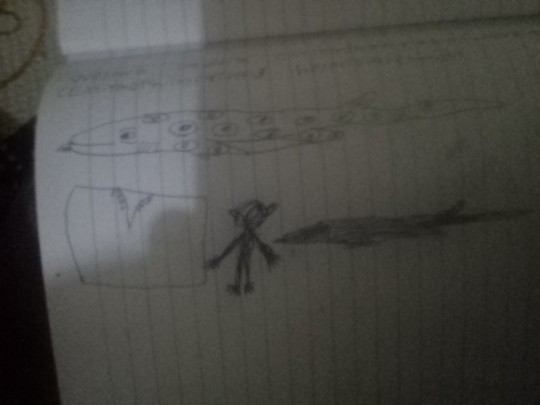
The Unusual Tropical Mountains of Western Gavet:The Mounsummerer
İn the Early Terocene,Some Descendants of Epaulette Sharks become adapted Freshwater Enviroments,this Sharks are called Freshwater Carpet Sharks (Suborder:Potamoscylioformia) a suborder of Carpet sharks. A one Family of this suborder become extremophiles,the Extremesharks (Family:Extremophiliocarcharidae) really interesting Family have 1 Genera and 9 Known Species,one of the 9 Species lived in Cloud Forests of Western Gavet,the Mounsummerer also known as Western Gavetian extremeshark (Extremophiliocarcharus hesperogavetiensia)
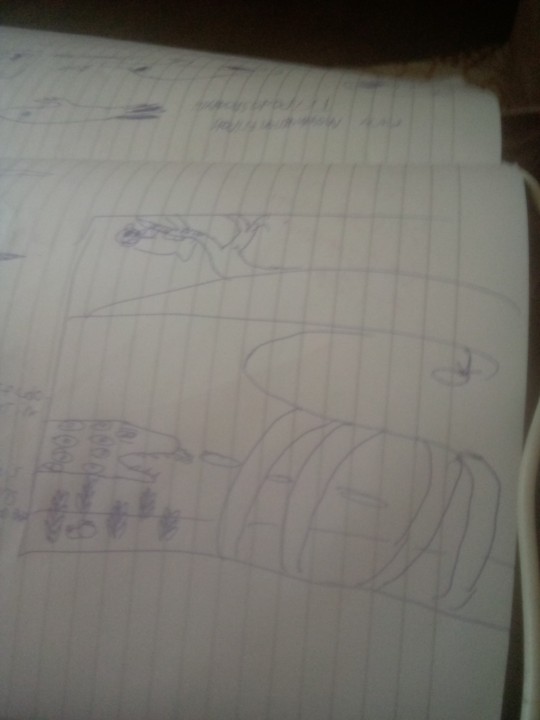
Mounsummerers are one of the Unusual sharks in the Planet of bats ever,because have a organ named "Pseudosyrinx" much like Syrinx of Birds,Pseudosyrinx are only found in Many Freshwater Carpet Sharks,But Basal members of Potamoscylioformians are not have this organ.
This species of Potamoscylioformian eat mainly Sea-peppers (Family:Capsicomimaceae) a family of flowering Plants convergent with Chili peppers,Sea Lily-like Teratopotamaceae,Sea Snugs and Flesh or carcasses of Predatory Fingillas (Smilocaninovesper fingillis) is a species of Dog-like Tera bat endemic in this Forests and are apex predators of cloud Forests of Western Gavet Mountain Range. Mounsummerers are one of preys of many predators like Red-mouthed Heronauk (Laripinguinotherium rhodognathus) a small species of Aviopteran related Larger relatives to Cloud Forest Terribaroo (Terribilomacropodus silvagenitus) is a species of Mesopredatory Two-legged Tera bat hunted by Fingillas. But Cloud Forests of Western Gavet Mountain Range only not have Plants,Fligthless bats and Sharks,a species of Small bat are macaw-like species... This is a Yellow Eared Treebat (Xylovesper aurantiorhinus)....
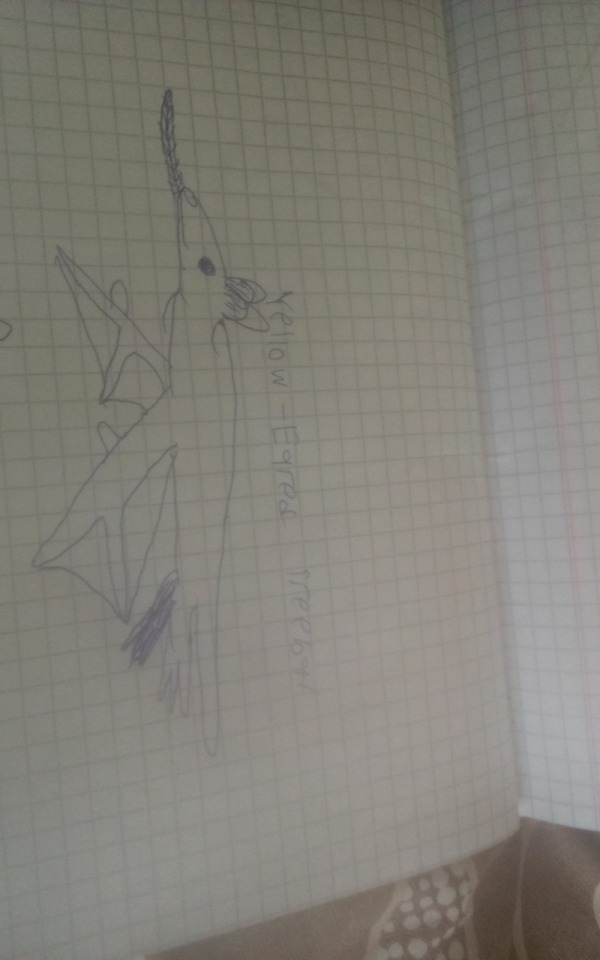
This is a member of Gavetian Leaf-tongued bats (Family:Phyllolinguovesperidae) are one of diverse Famillies of Mammals of Planet Of Bats ever to exist,Yellow Eared Treebats are in the Macawbat Subfamily (Aravesperinae) and Treebat Tribe (Xylovesperini) and a species of Genus Xylovesper meaning "Wood Bat" and finally,every animal is very Unusual!!!
Kingdom:Animalia
Phylum:Chordata
Subphyla:Vertebrata
Class:Mammalia
Superorder:Glirovesperia (Rodbats)
Order:Ptoridentia (Ptorident Bats)
Suborder:Xylovesperomorpha
Superfamily:Phyllolinguovesperidea
Family: Phyllolinguovesperidae
Subfamily: Aravesperinae
Tribe: Xylovesperini
Genus: Xylovesper
Species: X.aurantiorhinus
#speculative evolution#the planet of bats#speculative zoology#seed world#speculative evolution seed world#speculative evolution seeded world#hamsters paradise#tribbetherium#tribb speaks#sharks
4 notes
·
View notes
Video
I Fancy Standing on the Earth’s Edge with Mountains and Trees (Banff National Park) by Mark Stevens Via Flickr: While at a roadside parking area pullout along the Icefields Parkway with a view looking to the south to ridges and peaks of the North Waputik Mountains (Epaulette Mountain, Kaufmann Peaks, and Mount Sarbach). This is in Banff National Park.
#Alberta Highway 93#Alberta and Glacier National Park#Azimuth 171#Banff National Park#Blue Skies#Canadian Rockies#Central Main Ranges#Day 2#DxO PhotoLab 6 Edited#Epaulette Mountain#Evergreen Trees#Evergreens#Forest#Forest Landscape#Highway 93#Hillside of Trees#Icefields Parkway#Kaufmann Peaks#Landscape#Landscape - Scenery#Looking South#Mount Sarbach#Mountain Peak#Mountains#Mountains in Distance#Mountains off in Distance#Mountainside#Nature#Nikon D850#No People
7 notes
·
View notes
Text
Jar Jar Bring Uss-en and Da Naboo Together
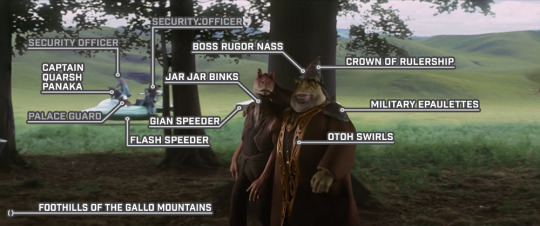
STAR WARS EPISODE I: The Phantom Menace 01:42:53
#Star Wars#Episode I#The Phantom Menace#Naboo#Gallo Mountains#unidentified Security Officer#unidentified Palace Guard#Captain Quarsh Panaka#Boss Rugor Nass#Jar Jar Binks#Gian speeder#Flash speeder#crown of rulership#military epaulettes#Otoh swirl
1 note
·
View note
Text
I sympathize saintjustitude. I wonder what those who are moral about the massacre of whites in Haiti think ( which was horrible I know but seems forget than a lot of Haitians try protect white people including Dessalines' wife Marie-Claire Bonheur) of Leclerc's letter to his brother in law Napoleon". "Here is my opinion on this country. We must destroy all the Black people in the mountains, men and women, keep only the children under 12 years old, destroy half of those in the plains, and not leave a single colored man who has worn an epaulette in the colony"." A little less than half of the Haitian population often died in atrocious conditions to the point that there were desertions in the french army. Here is a link to what I think about it ( of the Haitian revolution) Frustration - Tumblr Post . And I'm not even talking about the horrible repression in Guyana. Those who are moral about the French revolutionaries are more lenient towards Bonaparte (when Bonaparte was much worse in my opinion). It reminds me of those history lessons I assist where the Montagnards were trashed but on the other hand Thiers on the repression of the Paris Commune (more than 10,000 dead in one week in all of Paris, some say 30,000 dead) was forgiven and there the circumstances were explained as if Thiers was a good man. Strange this double standard.

👍
2K notes
·
View notes
Text
Episode 49th – After the Russian Civil War: The Last Days of the Basmachi
Recovering from Enver Pasha: the 1923-1926 Campaign
When we last left the Basmachi, Enver Pasha was being Enver Pasha and led his followers into a disastrous series of frontal assaults that shattered their forces. He was then hunted down and killed by Red Army forces. Three Basmachi commanders survived Enver Pasha: Salim Pasha, Enver’s successor, Junaid Khan in the Kara-Kum Desert in Turkmenistan, and Ibrahim Bek in Tajikistan.
Salim Pasha and Ibrahim continued fighting for the Bukharan Emir, who was now in Afghanistan, and many Basmachi fighters survived by retreating into the mountainous rural terrain, like Tajikistan and Turkmenistan, or ride to and fro from Afghanistan. Salim Pasha, in 1922, rode to Afghanistan and received the Emir’s blessing for a large scale attack against Eastern Bukhara. He united several smaller Basmachi units into an army of 5,000 and targeted not only Soviet garrisons but Revkom members and local party workers. However, like Enver Pasha, Salim Pasha thought in a scale larger than his forces could manage and was surprised by the Soviet’s improved tactics and abilities.
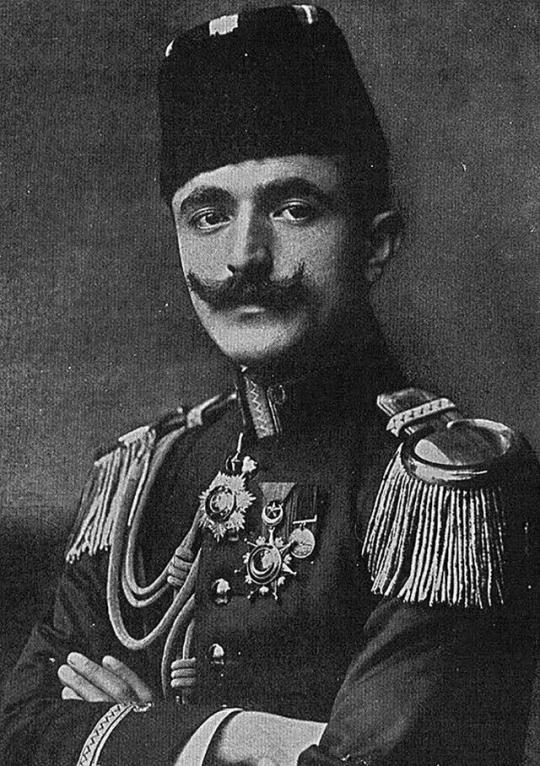
Enver Pasha
[Image Description: A black and white photo of a man standing at an angle, looking into the camera. he has a thick mustache that is twisted upwards. He is wearing a dark fex and a dark military tunic with gold epaulettes. His arms are folded across his chest]
His unified force survived from December 1922 to March 1923, when the Soviets shattered his units. He fled to Afghanistan and was later killed far from Central Asia by Kemalist secret police. While Haji Sami and Ibrahim Bek recovered from Enver Pasha’s death, Junaid Khan in Turkmenistan took the city of Khiva.
In October 1923, the Khorezm Soviet Republic made a huge mistake and declared the separation of church and state. They deprived the clergies of their responsibilities, and called for the nationalization of waqf land. The Khivans merchants and cleric begged Junaid Khan to rescue them and defend Islam. He and his Basmachi took control of the city of Khiva for a month. The Soviet’s sent a garrison to retake the city and drove his forces back into the Kara-Kum desert where Junaid Khan would remain until he fled to Iran in 1927.
Soviet Military Response
The Soviets took advantage of their victory by launching their own campaign in March. This campaign was led by Red Army commander and a hero of the Russian Civil War, Pavel Andreevich Pavlov. Pavlov had three objectives which proved devastating to the Basmachi:
Focus all attacks on the Basmachi base of operations instead of chasing them around the region. These three bases were: the mountainous stronghold of Matcha, the Lokai and Gissar Valleys in the south, and mountainous Garm in the east. These three areas would be attacked simultaneously so the Basmachi couldn’t flee into each other’s territories either for safety or to assist each other.
Increase his forces until they are strong enough to meet the task. Moscow granted his request for more support and by 1923 he had 5,832 men with 222 machine-guns and artillery pieces in Eastern Bukhara.
Severe the cord tying the cavalry to the infantry. Normally cavalry was used to protect the infantry and ride forward just enough to find the Basmachi or lead them into an ambush. Pavlov freed the cavalry so they could operate again as an independent force, allowing them greater independence and freedom of movement.
Pavlov’s methods proved successful in March 1923 when they took Matcha, a previously impossible objective for the Soviets. He succeeded because he ensured that all supplies were available when needed. His machine guns and artillery were assigned to pack trains and supplies were stockpiled on the Samarkand-Pendzhikent line in advance, far away enough to be protected, by close enough for supplies to be sent where they were needed. He also utilized local volunteers to serve as scouts, interpreters, and engineer labor.
Garm fell shortly afterwards on July 29th after a twelve-hour battle. Fuzail Maksum, the Basmachi in charge of the forces around Garm, fled to Afghanistan with a slight wound on August 12th.
The Gissar-Lokai valley continued to prove difficult to subdue, but as long as Salim Pasha remained in the region, the Soviets were able to exploit the rivalry between him and Ibrahim Bek, to the detriment of both of their forces.
The Soviet Political, Economic, and Social Response
By 1923, the Soviets realized they couldn’t break the Basmachi with military might alone. They needed to respond on the political, economic, and social front as well. To that end, the Soviets flooded the rural areas with Cheka or OGPU agents to flush out collaborators and convert supporters of the Basmachi to their cause. These conversions or alliances were heavily publicized affairs and often took place in open air demonstrations where Soviets and local actors alike gave big speeches in front of a large gathering, publicly professing their new alliance and friendship with one another. These speeches can’t be taken at face value and even one Soviet claimed:
“Of course, one could not trust the sincerity of the bais who welcomed the Soviet power and land reform. Still, their speeches showed that bais realized their powerlessness.” - Botakoz Kassymbekova, Despite Cultures, pg. 21
One particularly painful conversion was of Ibrahim Bek’s own people the Lokai in December 1923. To add more salt to the wound, the Soviets also recruited a 60-man cavalry detachment of Lokai people to hunt Ibrahim.
The assimilation of local leaders also extended to the Basmachi leaders themselves. A perfect example of this behavior is Ishniiaz Iunusov. Iunusov fought against the Red Army as a Basmachi leader but was later hired as the head of Soviet Muslim voluntary detachment to fight against the Basmachi. During the Basmachi campaigns he won two Red Banner medals and eventually became a member of the Communist party. He was then named head of the Administration Department and commander of the Voluntary Detachment. A Soviet report about his abilities read:
“His authority was based on his Soviet position and his Soviet distinctions. As the head of the Administration Department and Voluntary Detachment, he thought of himself as the absolute master. He formed his detachment as he wished, from his close people and from 30 members of his detachment; six of them were bais and kulaks… “Not a single arrest of a disenfranchised or bai in the region evaded him. In all cases he took the arrested out on bail and tried to help him. He even participated in illegal searches, arrests, and extrajudicial shootings” - Botakoz Kassymbekova, Despite Cultures, pg. 31-33
Economically, the Soviets implemented the food for cotton plan, which forbade farmers from planting anything but cotton in exchange for food. This meant that the Basmachi could no longer raid fields and had to extort food from their own supporters. Tajikistan was already experiencing mass starvation and hoarding food was seen as anti-Soviet behavior. Soviets, fearful that if food was being reserved it was for the Basmachi, often confiscated desperately needed food, leaving the locals at the mercy of their neighbors and whatever social programs the Tajik government was able to implement. While people feared the Basmachi, they also blamed the Soviets for the lack of food. One Tajik citizen complained:
“The government knows that Ura-Tiube region is full of Basmachi and that we suffer [first] from their treatment of us; second, we suffer from high prices; third, from expense for the Red Army soldiers who are defending us from Basmachi…People run away to the mountains when they see the Red Army soldiers. If grain costs five rubles on the market, the Red Army pays only 1 ruble 40 kopeks. There are many deficiencies here; if some commissions would come and investigate things thoroughly, they would find a lot of material “- Botakoz Kassymbekova, Despite Cultures, pg. 35
The lack of food not only put a strain on the Basmachi’s relationship with the locals, but also put pressure on Basmachi commanders to prevent their soldiers from deserting because of starvation and dwindling prospects of success. The Soviets took advance of this tension by issuing promises of amnesty.
On March 15th, 1925, the Tajikistan government promised to free all sentenced people who were imprisoned for under two years or had already completed at least half of their sentence. They also promised to shorten current incarceration periods by 1/3. They offer full amnesty and immunity to existing fighters if they surrendered between March 15th and June 15th, 1925. They proclaimed:
“On this great day for Tajikistan…the Revolutionary Committee aims to return to peaceful work those workers and peasants who committed crimes due to their darkness and ignorance, under the influence of emir and tsarist officials. We wish to give them a chance to redeem their guilt before the rule of workers and peasants." - Botakoz Kassymbekova, Despite Cultures, pg. 23
Of course, the Basmachi had to surrender their arms, rat out their collaborators, and publicly denounce their crimes. While the Soviets believed that if the state pardoned you, you wouldn’t forget it and would feel beholden to the state, there were more practical reasons to grant mass amnesty. The Soviet state wasn’t strong enough in Tajikistan to hold everyone in prisons. Some prisons were already holding 300% percent over their mass capacity. They didn’t have enough guards or food to feed the prison population.
Despite their promises the first few years of Tajikistan’s existence were filled with more executions of Basmachis than amnesties. Again, this is because of limited state capacity in Tajikistan. The high court didn’t exist outside of a couple of tables, which traveled with the judge, revolutionary committee members, and political police under red army guard.
Because they didn’t have the resources, manpower, or institutional support, many judges realized that the best way to handle the Basmachi was with quick show trials and executions. It also worked as a semi-military strategy in the Soviet’s battle over the territory. One judge wrote:
“Basmachi resistance demanded quick show trials and strict justice…delay of an execution, not to mention the revision of capital punishment, would undermine all our efforts in the fight against the Basmachi…During this month we heard 70 cases, 45 of whose defendants were sentenced to death.” - Botakoz Kassymbekova, Despite Cultures, pg. 25
Not all Basmachi were lucky enough to have a show trial. Many were killed in gunfights or extrajudicial killings. Between 1925 and 1926 the OGPU shot 208 Basmachi supporters. From March 1925 to September 1925, the Red Army killed 48 Basmachi leaders and 1,423 Basmachi soldiers.
However, the Soviet’s ability to kill its enemies depended on cooperation from local leaders and this wasn’t always forth coming. Many officials prevented trials or executions by not supplying translators, juries, or public defenders. However, this came at great risk to the people who delayed the trials. Many were executed as well.
The violence alienated people and the amnesties lost their appeal when it became clear that those who surrendered were left hungry, homeless, and destitute. Add clan disputes and personal rivalries and there were many reasons for Basmachi to switch sides. Abdukarim explained why he collaborated with the Soviets and then abandoned them as follows:
“At the beginning I was a Basmachi, and from your side many good words were said, so we surrendered and gave up our guns and sat calmly in our houses. But all your talk turned out to be a lie since we did not know what your rule was about, [your rule] actually made us Basmachi. The reason is that among us there are many bad people and each of us has many enemies, and so these bastards give you information that one or another person has weapons. You arrest these people only on the basis of their words without asking people themselves. This is the only reason we became Basmachi again” - Botakoz Kassymbekova, Despite Cultures, pg. 34
He complained to a Soviet commander that:
“Mirza Abul Khan worked for your rule so hard, but he did not receive any salary for eleven months. But today, Imam Ali Mukhat, the messenger who is unrighteous – does not accept Shariat—informed us that he has two three-line rifles, two sabers, one Berdan rifle, and one revolver.” - Botakoz Kassymbekova, Despite Cultures, pg. 35
He wrote:
“If [Soviet rule was just] in reality, it would not intervene in every person’s business for the past two or three years; I mean Basmachi resistance would have ceased to exist in the past two or three years…We have nothing but Allah and the Prophet. We have no guns, no finances, no soldiers to wage war, but because of fear for our lives, we run around without having any relation to your workers nor to your business… I swear by Allah and his Prophet that your rule made us Basmachi” - Botakoz Kassymbekova, Despite Cultures, pg. 37
If the Soviets thought it was impossible to find loyal cadre in Uzbekistan and Kazakhstan, Tajikistan made them want to tear their hair out. Il’iutko, a Soviet representative in Tajikistan, wrote:
“The Shurabad Revolutionary Committee was formed from the following people: the chair – Abdul Rashid, a bai from the tribe Isan Hoja; his deputy was Abdul Kaim, a bai from the Badra Ogly tribe; kazis [judges] from Isan Hoja; one representative from the Badra Ogly tribe; and a representative from the Red Army. Abdul Rashid bai was appointed as chair with the following reasoning; the leading organs of East Bukhara thought this appointment would appeal to Abdul Rashid’s self-esteem, as he had fought against Ibrahim Bek for a long time and would encourage him to fight against Basmachi with full energy and responsibility. But our hopes were not borne out; he supported the Basmachi” - Botakoz Kassymbekova, Despite Cultures, pg. 29
The Soviets ran into issues trying to punish the leaders they were collaborating with. Many times, Tajik citizens would try to defend their local leaders one Soviet commander wrote:
“If a leader was arrested, people went to great lengths to get him out of jail, certifying their work against the Basmachi” - Botakoz Kassymbekova, Despite Cultures, pg. 31
Yet not all local leaders supported the Basmachi. Many found a way to fit within the Soviet order. Maksum Abdullaev, a Soviet Muslim, wrote:
“When in 1924 Ibragim Bek wrote me that if I joined him he would make me bek of Kuliab, I answered that Soviet rule had already made me a bek. Soviet rule is strong, but you are an outlaw” - Botakoz Kassymbekova, Despite Cultures, pg. 41
Ibrahim Bek’s Counter-Offensive
By September 1923, Ibrahim Bek was the last Basmachi commander standing in Eastern Bukhara, and he retained enough strength to launch a counter-attack. Ibrahim Bek attacked a garrison at Naryn at the moment of Soviet recruitment turnover – assuming this meant that the number of inexperience soldiers would be high. However, the recruits held until reinforcements could arrive and they drove Ibrahim Bek back, Soviets claiming they killed 117 Basmachi commanders and 1565 soldiers.
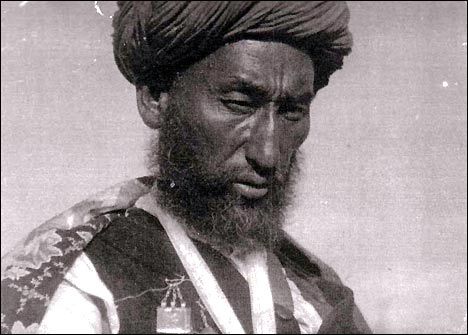
Ibrahim Bek
[Image Description: A dark skinned man with a scraggy beard. He is wearing a grey turban and a black and white long shirt. A black robe with embroidered flowers rests on his shoulders.]
The Soviets sent forces to occupy the land of Urta-Tugai on the Soviet-Afghan border making it harder for the Basmachi to slip to and fro. Pavlov worked hard to rip the roots of support out from underneath the Basmachi, effectively hurting their supplies and support.
In 1926, the Soviets achieved what they thought was the final victory against the Basmachi. In March 1926, Red Army commander Semen Mikhailovich Budenny led an all-out assault against Ibrahim’s remaining forces. Relying on Frunze’s tactics of flying columns and implementation of garrisons in key locations to cut Basmachi forces off from their supports, Budenny planned to beat Ibrahim Bek into submission. Because of Budenny’s tactics, Ibrahim Bek’s forces faced the choice of starving to death in the mountains while being hunted down by the Soviet flying columns or die making a last stand against the Red Army within the Gissar and Lokai valleys. An interesting development was the introduction of heliograph stations and a permanent mobile field staff in the region. Radio wasn’t available in 1926, but by using strategically placed heliograph stations, Soviet forces to warn units of approaching Basmachi, robbing the guerrilla soldiers of the element of surprise.
Ibrahim Bek held on until the Soviets took 1,500 sheep belonging to Ibrahim. Without this desperately needed food source, Ibrahim was forced to flee into Afghanistan, ending the Basmachi threaten in Eastern Bukhara.
Political Turmoil in Afghanistan and Tajikistan
One of the reasons the Soviets were able to defeat the Basmachi was the ability to win over the support of the local peoples via increased access to food and land, alleviating any fears that Communism would sweep away long held traditions and Islam, and forcing the Basmachi to hurt their own supporters while looking for supplies. However, by 1927, the Soviets had shot themselves in the foot by implementing increasingly unpopular measures such as the hujum, the unveiling and liberation of women, the ending of the Islamic courts, the further reduction of waqf lands, and the increased secularization of education (much of which was facilitated by the creation of nation-states, which we discussed last episode). Worse, maybe, was the forced collectivization and the forced settlement of the nomadic populations. The campaign started in 1929 and inspired a new wave of anti-religious fervor amongst the Soviets. When the Soviets weren’t forcing nomadic people to settle, they were closing mosques and madrasas and arresting clerics. Collectivization nationalized all land and forcefully resettled nomadic and semi-nomadic and rural populations as the Soviets saw fit. It would have tragic consequences in Kazakhstan and in Tajikistan and Turkmenistan it provided the spark for one last hurrah for the Basmachi.
After pushing the Basmachi into Afghanistan, the Soviets had a hard time keeping them in Afghanistan. In 1927, one OGPU officer wrote:
“The border is not secured; we have no guns or people to guard it; the militia is drunken and amoral. It is impossible to guard the border; it is impossible to stop Basmachi groups [and] to prevent damage to agricultural campaigns” - Botakoz Kassymbekova, Despite Cultures, pg. 55
It is easy to overstate the threat Bukharan Emir Muhammad Alim Khan presented to the Soviet Union. He had been staying in Afghanistan since his ouster in 1921 and so much had happened in the region since he fled. Even if people wanted him to return at one point, that desire had disappeared a while ago except for the most diehard of emirists. Still, he was able to provide some support to Ibrahim Bek and the Basmachi who fled to Afghanistan. Ibrahim used the time in Afghanistan to extort money from the Bukharan refugees who had settled in Afghanistan and to restructure his command. He centralized his command granting him a better understanding of what his supplies looked like and how many men he actually had. He also improved communications between his men in the field and himself and himself and the emir.
Despite signing a treaty of neutrality and non-aggression in 1921, the Afghan government had always tolerated the Basmachi. This became a problem in 1924 when northern Afghanistan underwent a power struggle. Ibrahim took advantage and made camp in Urta-Tugai island. The Soviets were so freaked out, they invaded Afghan territory in 1925. Now Urta-Tugai had an Afghan garrison that had mostly turned a blind eye to the Basmachi. When the Soviets invaded, they actually disarmed and occupied the Afghan garrison.
This scared the Afghan government, prompting them to sign another treaty of neutrality and non-aggression. A year later a popular uprising would make the treaty void and end any attempts to push the Basmachi out of northern Afghanistan.
The Basmachi would take advantage of the political turmoil in Afghanistan and in spring 1929, the Bukharan Emir called together the remaining Basmachi to him. He issued a decree placing leadership of the remaining forces under Ibrahim Bek’s command with the intention of invading Tajikistan and reclaiming it from the Soviets.
The Resurrection: the 1929 Campaign
In spring 1929, the Basmachi tested the units stationed on the Soviet-Afghan border and in April, Fuzail Maksum of Garm slipped across the border with fifteen men to connect with supporters in Eastern Tajikistan. His purpose was to raise local support and recruit and prepare for the arrival of Ibrahim Bek with the main Basmachi force. Maksum raised two hundred men and led several attacks against Garm, achieving several minor victories.
The overall Soviet Commander in Central Asia, General P. E. Dybenko, issued several emergency measures to address the growing threat. He ordered the raising of local self-defense units in Eastern Tajikistan and increased the local political work. He even tried to manipulate the local antagonisms within the population to defeat the movement, believing that the many cattle-breeders of the region would hate the Basmachi for their requisitioning efforts. Despite these efforts to engage with the local actors, the main Soviet strategy was still military in nature. The Russians countered Basmachi hit-and-run tactics by establishing militarized zones and used artillery and air raids to destroy villages suspected of collaborating with the Basmachi. The Cheka arrested and deported 270,000 Turkestanis suspected of collaborating with the Basmachi. During the Red Army’s occupation, they burnt Dushanbe, Andijan, and Namangan to the ground and damaged several other villages. In total 1200 villages were burnt to the ground.
Fuzail Maksum’s force of now 800 men led an attack against the city of Garm and then the neighboring airfield. The Soviets defended the airfield with 16 men waiting for reinforcements that would arrive by air and a seventy-five men cavalry regiment. Five airplanes arrived at 6:00 am on April 23rd, 1929, unloading 40 men, carrying machine-guns and ammunition. Fuzail Maksum’s forces fled, abandoning Garm. On May 3rd, badly wounded Maksum returned to Afghanistan.
Afghanistan’s Problem
The Soviet’s retaliated against the Garm region hard and fast. They set up special OGPU campaigns to ferret out the people who supported Maksum, holding special tribunals and several people were executed. Despite these setbacks, Ibrahim Bek’s forces were able to cross the Afghan-Soviet border with ease.
The Soviets grew so concerned over these incursions that they seriously considered an invasion of Afghanistan to place a puppet government on the throne. They even sent a force of 800-1200 Red Army soldiers dressed as Afghans in support of one of the Afghans vying for leadership, but had to retreat when they were stopped by the Afghan army and their candidate abdicated. The situation in Afghanistan stabilized and the new government under Nadir Khan left the Basmachi alone. However, the Soviets gave up on diplomacy and started to chase the Basmachi across Afghanistan’s border, sometimes crossing 40 miles into the country before withdrawing. Nadir Khan was forced to act, and he dispatched Sardar Shah Mahmud the Afghan army’s commander-in-chief to deal with the Basmachi problem. He also started negotiations with the Soviets to renew the 1926 treaty of neutrality and non-aggression.
General Mahmud demanded the Basmachi disband, and Ibrahim Bek replied by saying he was going to unite with the Uzbeks and Tajiks in northern Afghanistan and create a nationalistic Uzbek-Tajik government independent of Afghan Control. In December 1930, Mahmud entered the northern territory. Through the spring of 1931, he led a large-scale campaign against Ibrahim Bek and reclaimed several major cities but could never capture Ibrahim Bek himself. Instead, on March 1931, they offered Ibrahim Bek to incorporate his forces into the Afghan army. He refused and in April 1931, he led 800 men into Tajikistan for a final invasion. In total, he had a command of 2000 men.
He swept into Tajikistan armed with reliable intelligence and the momentum of a sudden invasion. He executed pro-Soviet officials and locals, blew up several warehouses, state farms, and railway lines. The people of Tajikistan initially supported his uprising but grew disenchanted with his discounted political and ideological ideas. Trying to rally people around an Emir that had been deposed for about a decade and the return of feudalism held little appeal to most people. Too much had changed to go back to the old ways and Ibrahim Bek had been too disconnected from his people to fully understand what they wanted.
Anyone who tried to join him from Afghanistan ran into Soviet patrols and suffered severe losses. The Soviets created a special unit of OGPU, local volunteers, and Komsomol members to hunt Ibrahim Bek down. In May, the Red Army offered amnesty to any Basmachi members who surrendered causing 12 leaders and 653 men to abandon the Basmachi ranks. Ibrahim Bek was left with only fifteen men in the foothills of Baba-Tag avoiding assassination attempts and betrayals. On June 23, 1931, while attempting to cross the Kafirnigan river, he was betrayed by locals, and captured by Soviet forces. He was sent to Tashkent and executed, officially ending the Basmachi guerilla movement.
References
Making Uzbekistan: Nation, Empire, and Revolution in the Early USSR by Adeeb Khalid
Despite Cultures: Early Soviet Rule in Tajikistan by Botakoz Kassymbekova
“Frunze and the development of Soviet counter-insurgency in Central Asia” by Alexander Marshall in Central Asia: Aspects of Transition by Tom Everett-Heath
“The Final Phase of Liquidation of the Anti-Soviet Resistance in Tadzhikistan: Ibrahim Bek and the Basmachi, 1924-1931” by William S. Ritter
“The Basmachi or Freeman’s Revolt in Turkestan 1918-1924” by Martha B. Olcott
Russian-Soviet Unconventional Wars in the Caucasus, Central Asia, and Afghanistan by Robert F. Baumann
#queer historian#history blog#central asia#queer podcaster#central asian history#spotify#basmachi#ibrahim bek#guerilla warfare#afghanistan#soviet union#russian colonialism#soviet empire#Spotify
0 notes
Text
Nie Huaisang’s outfits appreciation post
After the terrible loss of our second best dressed cultivator and fashion icon Nie Mingjue, the cultivation world now lacks one of it’s pillars. But little did they know, our fashion king had a disciple, someone capable of honoring his legacy in many ways.
While we all grief, a new icon rises.
And I’m here to prove that Nie Huaisang deserves his late brother’s title not only because Mingjue’s no longer serving looks -may his fashionable soul rest in peace-, but because Huaisang has always been a stylish icon on his own.
I mean, this look right here is enough proof:

Huaisang has quite a lot of robes, and they are all so different, I decided to compile them chronologically:
1. the “assigned fashionable at birth”one
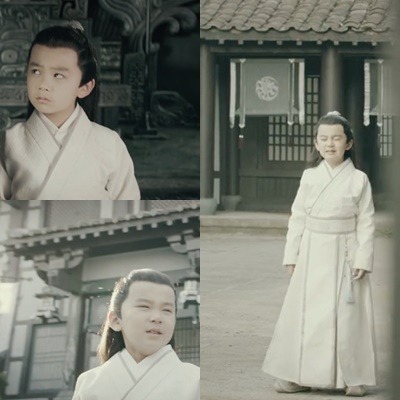
Look at this small bean with his cream-colored robes. Whoever chose this color for him did a great job, though it’s a bit weird that they looked at baby Mingjue and went “all you’ll wear is dark gray from now on” and then Huaisang was born and “cream it is!” And we don’t really see anybody else from the Nie sect wearing this color, I wonder if it has anything to do with Huaisang’s mom, or if it’s just for the dark\light color contrast, the two young masters can’t possibly wear the same colors, it would ruin the aesthetic.
It looks just like his main-possibly-stay-at-home-robes, like he just really loved this especific set and had a lot of other robes that looked just the same growing up.
Really small, really cute, makes you want to carry him around saying: look at my baby, he’s so stylish!
2. the “good old Gusu days” one

This is like a uniform, there’s nothing really special about it. But I’d like to point out two things:
One: the silver embroidery on the shoulders and the silver on his waist belt matches the pristine white of his robes really well.
Two: look how wide his shouders look, there you go, Huaisang, keeping the Nie shoulder game strong!
3. The “it’s called fashion, dage” one
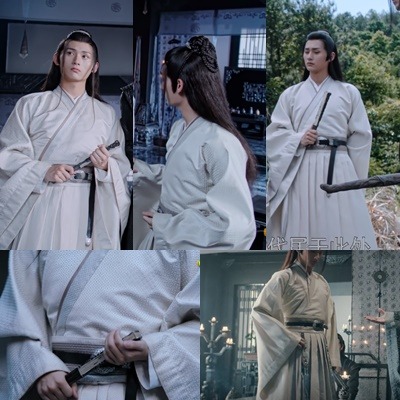
Cream-colored again! It embodies teen!Huaisang’s aesthetic perfectly: it’s expensive, it’s pretty, it looks comfortable, but it’s minimalistic.
I mean, I have no idea if it is actually expensive, but it surely looks expensive.
It has no discernable patterns, but the fabric just looks so good, look at the texture. It looks warm and heavy (rip Ji Li). And it’s pleated, look at him! Everything about this one screams rich-carefree-spoiled-delicate-pretty-gongzi.
And well, we see him strolling around and getting in trouble instead of going straight home in this robes, then on Fatal Journey we see him painting landscapes instead of practicing and claiming he doesn’t want to become the Nie sect leader in this very set of robes. Maybe he has indeed been wearing similar robes since his childhood and wants to, you know, go back to when things were as simple as taking the long way home coming back from Gusu.
4. the “didn’t really engage on the war but needed to look good regardless” one
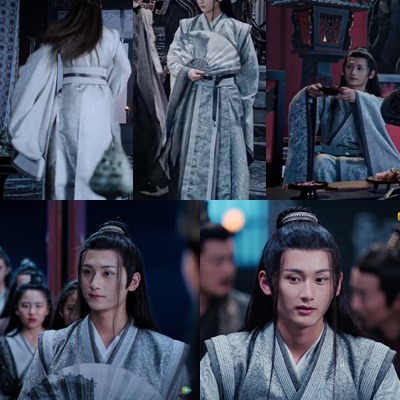
This one is so pretty, y’all. It’s silver and white and gray, the brothers are matching with their disciples’ robes, you won’t find a Sect with a superior fashion sense.
I can totally understand why he didn’t change to some post-Sunshot robes. Imagine looking this good at home, with none of your friends or disciples or brother to see you. Nope. This robes belong to a banquet, even one as unpleasing and akward as this one.
(They technically saw him, since he wore the same robes while they were planning the whole Sunshot thing, but no one was paying attention to it, right? And you can’t let such a nice look go to waste)
One of my favorites, for sure. It even matches his fan. It’s peak aesthetic.
5. the “I’m only here for the food and the drama” one

I didn’t really like this one at first. It looked kinda futuristic in my head, you know? It’s probably just the really structured fabric and the color, but It was a bit too much.
But now, looking at it as I take screenshots, I like them. It’s bold and fierce and remember the shoulder accessories being a code for battle? Well, I doubt Huaisang shot a single arrow that day, but he was supposed to be competing, so it makes a lot of sense that he’s dressed like this while his brother is wearing his pretty, dark yet lighter civillian robes to watch him.
He’s even wearing epaulettes (well, I trust that that’s the name) that matches the ones Mingjue wore with his Sunshot robes! Are they the same pair? Did he borrow it? Or do they secretly comission the same robes and accessories and wear them on alternate occasions?
These are the most battle-coded (and at the same time is not battle-coded at all, it’s too ostentatious) robes we see him wearing until now, and he is representing his sect at the hunt, he has to look like a proper heir that is capable of fighting, whether he likes it or not - and judging by how unenthusiastic he was during the opening shoot-the-wen-prisioners ceremony, I’d say he was not enjoying it at all-.
But it’s such a cool look, I really like it now.
6. the “he will throw hands with a non-corporeal entity while giving his big brother all the love and understanding he deserves” one

This may look like the same robes we usually wears at home, but they lack the pleated part and I don’t think his long sleeves would fit inside his wirst thingy, which I now know it’s called a vambrace or a bracer, they were quite wide sleeves.
Anyway, we again have his minimalistic aesthetic. No patterns, the only addition being the outer robe that realy looks like the one Mingjue wears with his stay-at-home robes, except with no sleeves; and the bracers\vambraces.
But look how different this looks in comparison with the previous one; he wasn’t fighting shit in those pompous silver robes, but he was so determined here, ready to face anything. This is the difference between a battle-coded look and a battle-codded Huaisang.
It’s practical, it’s pretty, looks comfortable and it’s perfect for scolding your older brother then comforting him because he gets emotional when people argue with him, ok?
Huaisang is the best younger brother, fight me
8.the “sad, sad” one
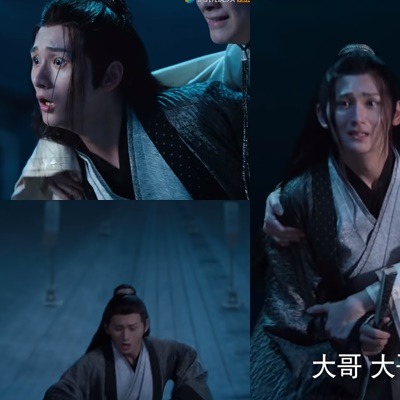
I’ll just say that the inner robes are really similar to the one Mingjue wears with his stay-at-home robes, though they are not the same. Perhaps my theory that they did comission a lot of similar itens is correct after all.
I don’t think this look is particularly good, and the context surely doesn’t help at all, but it’s interesting to see him in gray and black.
Overall, I hate it here.
9. the “somehow even worse” one

Look, if I had to compile all his outfits, I had to include this one. But there’s nothing to say about it except just looking at him wearing it makes me sad.
10. the “you didn’t see that coming, did you?” one
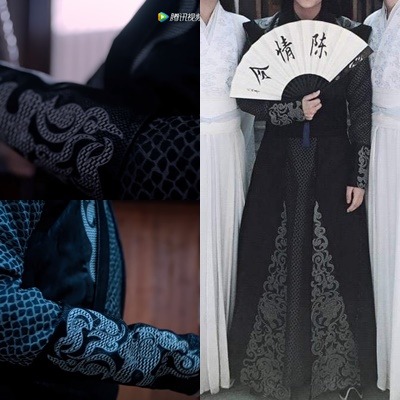
This one here is a trick, ok? At this point of the story we have no idea of what’s going on and if this misterious person is important or not; all we know is that he is quite fond of patterns and dark clothing. And that he has some money.
But damn, once we find out who this is, it instantly becomes something else entirely.
It’s so fucking DARK!! It’s Wei Wuxian’s kind of dark, it’s crazy to think our boy Huaisang, who’s been wearing light grays, white and cream all his life would come up with something like that. It doesn’t even look Nie, and that’s probably what he was going for, y’know, so no one could recognize him and all of that.
But jesus, this look is just wow. It’s perfect for a scheming mastermind, even though we don’t really know about it yet. The scales pattern is really nice and I love when he wears this sort of robe, with the fitted sleeves and the extra fabric at the shoulders. The flame (I think) pattern is nice too, though it’s a bit too much here, just a bit. But he seems to like this pattern a lot, so let him have it
And the craziest part is: we know these robes. And i’ve seen a couple of posts about them, it’s the same inner robe he wore at the Phoenix Mountain night hunt competition, almost 16 years ago.
Like what are these robes made of??
11. the “sneaky, sneaky” one

The famous Nie pattern, am I right?
I love all theories about this one and as I took the screenshots, I noticed how his inner robe is the same as robe number 8. Huaisang says no to excessive buying, please reuse your clothes!
I’m particularly fond of the theory that Nie Mingjue comissioned robes for both his didi and his boyfriend Xichen, but I can accept that Huaisang just inherited his brother’s robes, though the flame pattern (once again proving we won’t guess Huaisang is behind everything not even after seeing him wearing the same patterns as in episode one twice) at the bottom is definetly a Huaisang thing.
I really like how heavy it looks, and the black thin stripe.We know it’s the same pattern as Xichen’s robe but seeing it combined with the back and light gray of the Nies really gives it a distinct identity.
12. the “and the oscar goes to...” one

Look at him, all innocent-looking placing all the chess pieces on their right places. Gotta love director Nie. And it makes so much sense that he would wear something as light as this robes for this moment. He wore light colors for most of his youth, when he was carefree and naive and harmless; he cultivated a reputation of being dependent, fearful and stupid even. In this moment, more than ever, he needs people to believe this is exactly who he is, and what’s the best way of doing it?
Yes, reminding them of your old self. All he does is pretend and lie while he cries and faints. A director and an actor too!
Throw yourself at your brother’s sworn brothers trying to look harmless while annoying the hell out of them? check.
Faint conveniently as your brother’s murderer lies at your face about killing said brother because even you have limits and you can’t watch that fuckery and not want to murder him right there? check.
Pretend to be stupid while conducting the protagonist and pretty much everybody else to ask the right questions and therefore unmask the terrible things your nemesis did? also check.
And the robes are really pretty, look at the texture at the bottom right!! Silver and white go really well together. Wide, wide sleeves and this heavy-looking fabric. Superb, really, one of my favorites again.
And look at him carrying his saber (which he probably left at Pier Lotus later)!
13. the “...and cut!” one

Look at these robes and tell me they don’t absolutely look like something Nie Mingjue would wear. You know he would.
And it’s such a contrast to his previous robes. The white and silver one for looking innocent and lost and funny; the dark gray to look like a serious sect leader who will endorse the accusations against his enemy (Ok, he did act confused and lost and innocent in these robes, but he also showed real shock and grief and sadness, he did show his true feelings too)
He’s honoring his brother here, he did it, he brought justice to him, he defeated his brother’s murderer. He spent years wanting and waiting for this moment, it’s only fair he would do so while looking so much like his beloved older brother.
I love everything about this look. The color palette is almost the same as the one robe his brother wore to the post-Sunshot campaign banquet. The dark,shining gray, the black, the thin bronze\golden stripe at the collar. Even that extra overlaid fabric at the bottom front of his robes is the same as Mingjue used to wear. Beautiful, really.
He would be really proud of you, I hope you know that, Huaisang.
14. the “I may or may not steal your chief cultivator status, watch out Wangji” one
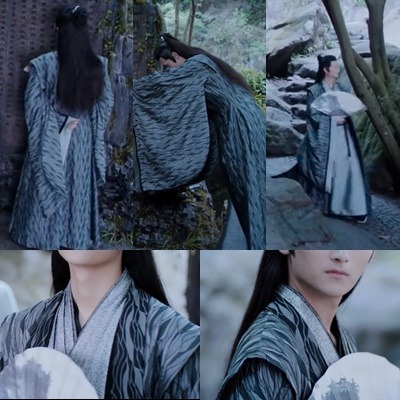
I know he would never steal Wangji’s post, cql!NHS doesn’t even want it; but like, we deserved Chief cultivator!Huaisang, right? So it was worth the joke, I think.
The inner light gray robe yet AGAIN, I suspect this is his favorite inner robe.
We have some bold patterns here, so elegant. I really like when he wears this kind of outer robe, accentuating his shoulders, suits him really well, And this is such a Nie color palette, just like the previous one. In fact, Huaisang wears way more dark colors than we give him credit for. Especially after becoming sect leader.
Sleeve game on point too, really long. And it matches his fan as well.
Lovely look, I wish we could have seen more.
In conclusion:
King of versatility, resusing 16 year-old robes AND looking damn good while doing it! He looks good scheming, he looks good lying, he looks good fainting, he even looks good tricking people into stabbing other people!
Name a more iconic king, I’ll wait.
#this ended up more like meta than I intended#but Huaisang deserves all the praise#also it's super long#but he has many outfits ok#nie huaisang#nie brothers#cql#mdzs#i spent an unhealthy amount of time doing this#why? huaisang deserved a post too#same thing I said about the other post stands please tell me if I said something disrespectful
1K notes
·
View notes
